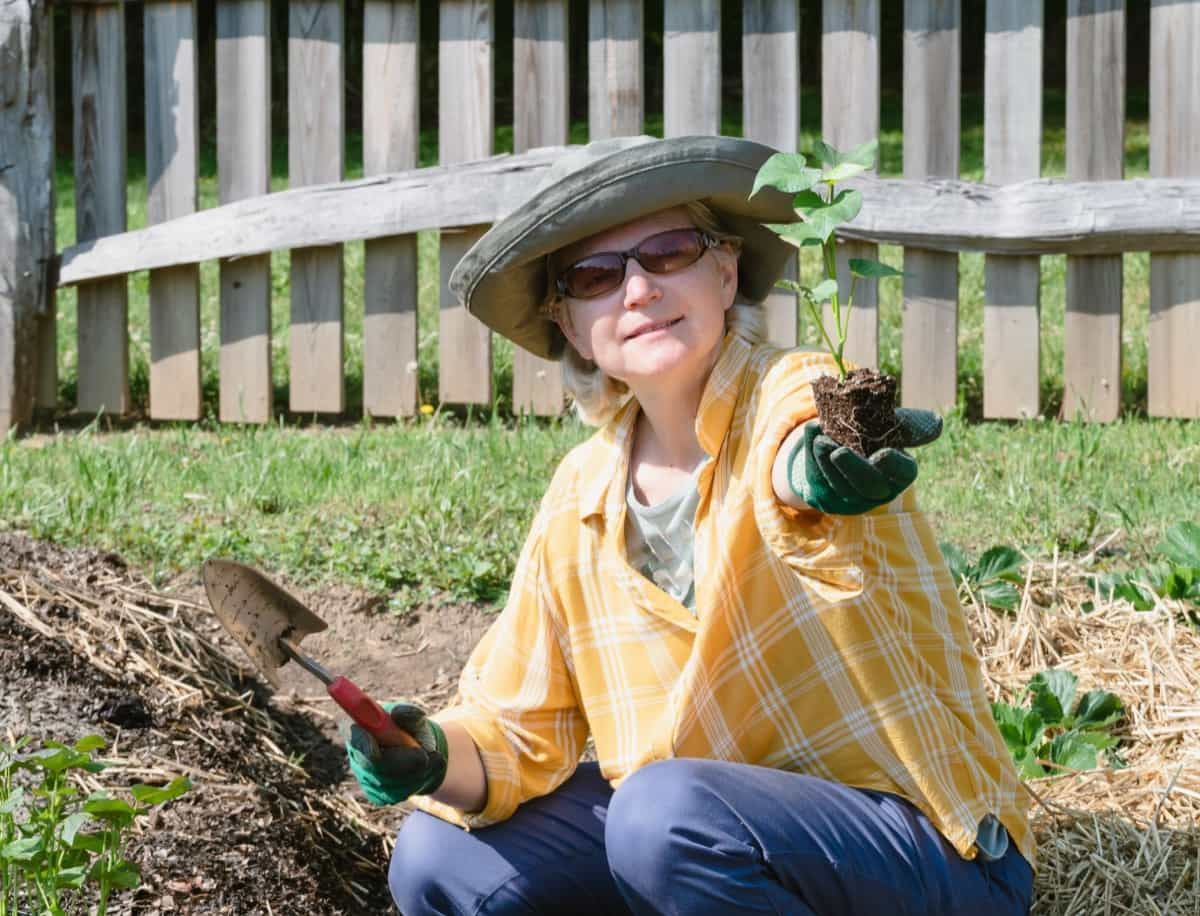Because of their versatility and health benefits, sweet potatoes have become a common ingredient in many households. They are simple to cultivate and provide a healthy dose of fiber, vitamins, and minerals. If you’re looking to grow sweet potatoes from store-bought sweet potatoes, here’s a step-by-step guide to help you get started. Below we learn how to grow sweet potatoes from store-bought sweet potatoes, and we will discuss some FAQs.

Can You Grow Sweet Potatoes from Store-bought Sweet Potatoes?
Planting sweet potatoes are easy and rewarding; you don’t have to be an experienced gardener. Food is a significant expense, but with a bit of know-how, you can save money by growing your own. If you plant the sprouting part, known as a slip, you can have your own sweet potatoes in only a few months. You can grow them just fine with store-bought ones.
How to Grow Sweet Potatoes from Store-bought Sweet Potatoes?
Select the Right Sweet Potatoes
The first step in growing sweet potatoes is to select the right ones. Look for those that are firm and free of cuts, bruises, or blemishes. You also want to look for sweet potatoes with” “eyes” or small sprouts. These eyes are where the new sprouts will grow from. Avoid buying sweet potatoes that have started to sprout roots, as they will not grow as well.”
Select the Right Sweet Potatoes
The first step in growing sweet potatoes is to select the right ones. Look for those that are firm and free of cuts, bruises, or blemishes. You also want to look for sweet potatoes with “eyes” or small sprouts. These eyes are where the new sprouts will grow from. Avoid buying sweet potatoes that have started to sprout roots, as they will not grow as well.
Prepare the Soil
Sweet potatoes grow best in well-draining soil with a pH between 5.0 and 6.5. If your soil is heavy clay or has poor drainage, consider amending it with compost or other organic matter to improve its structure. To ensure that your sweet potatoes have all the nutrients they need to flourish, you can apply a slow-release fertilizer into the soil.
Cut the Sweet Potatoes
Cut them into 2 to 3-inch pieces, ensuring each piece has at least one “eye.” Let the cut sweet potatoes sit for a day or two to allow the cut surfaces to dry and form a callus, which will help prevent rotting.
Plant the Sweet Potatoes
Plant the sweet potatoes 4 to 6 inches deep and 12 to 18 inches apart in well-prepared soil. Cover the cut pieces with soil and water them well. If you’re planting in containers, ensure the containers are at least 12 inches deep and have good drainage.
Watering and Caring for the Sweet Potatoes
Sweet potatoes need regular watering to keep the soil moist but not waterlogged. It’s essential to avoid letting the soil dry out, as this can lead to poor growth and lower yields. To retain moisture and weeds, mulch around sweet potatoes as they develop. Slow-release fertilizer or compost side-dressing every 4 to 6 weeks might supply nutrients.
Harvesting the Sweet Potatoes
If you plant them, you should expect to harvest them after 100 to 120 days, after the leaves have turned yellow and died back. Dig around the sweet potato plants’ bases with a garden fork, taking caution not to harm the tubers, and then collect the tubers. Carefully remove the plants from the soil and gently shake off the excess. You should let the sweet potatoes cure for a week or two in a warm, dry location before putting them away in a cold, dark spot.
In case you missed it: Can You Grow Potatoes from Store-bought Potatoes: Step-by-Step Process

Frequently Asked Questions about Sweet Potatoes (FAQ)
How to Grow Sweet Potatoes in Containers?
A container with adequate drainage holes and a depth of at least 12 inches should be used as a starting point. Plant the sweet potato slips or cuttings approximately 4 to 6 inches deep into the well-draining soil mixture, giving about 12 to 18 inches of space between each plant in the container.
Put the pot in direct sunlight and water periodically, so the soil is never dry but never soggy. Additional soil in the container or a stake or cage to hold the plants can be necessary as the sweet potatoes expand. When the leaves turn yellow and die back, generally about 100–120 days after planting, it’s time to harvest your sweet potatoes.
How to Cut Sweet Potato Slips for Planting?
Putting sweet potato slips is as easy as slicing a mature sweet potato into parts, letting the pieces germinate, and then planting them in the soil. Begin by choosing a sweet potato that is at least a few years old and fully ripe, then cut it into 2- to 3-inch parts, ensuring each section has at least one eye. Then, put the jar in a warm, sunny spot with the sliced portions facing up in the water.
Sprouts will emerge from the eyes in a matter of days, and when they reach a length of 6 to 8 inches, they can be plucked out of the water and planted directly into the soil. The slips should be planted between four and six inches deep, with the leaves poking out of the soil.
How to Know When Sweet Potatoes are Ready to be Harvested?
When the sweet potato leaves turn yellow and fall off, the tubers are ready to be picked. This usually happens around Day 100–120 after planting. First, dig around the plant’s base with a garden fork, then carefully remove it from the soil to see whether the sweet potatoes are ripe. Mature sweet potatoes have tough, smooth skin that doesn’t bruise readily. If sweet potatoes are picked too early, they will be undersized and tasteless. Sweet potatoes should be cured for a week or two after harvest in a warm, dry area before being stored in a cold, dark room.
In case you missed it: Can You Grow Pumpkins from Store-bought Pumpkins: A Step-by-step Process Guide

Should I Soak Sweet Potatoes Before planting?
Soaking sweet potatoes before planting is optional but speeds up sprouting. Soaking sweet potatoes overnight helps speed up the sprouting process. Grow sweet potatoes without soaking if you forget or don’t have time. After cutting sweet potatoes, plant them immediately and water the soil to promote development. The keys to effective sweet potato cultivation are well-drained soil, frequent watering, and enough nutrients.
Conclusion
In conclusion, it is easy and inexpensive to grow your sweet potatoes from store-bought tubers. If you give your sweet potato plants enough water and sunlight, they will flourish in any size garden or on a patio.
- Feed Your Flock for Less: Top 10 Tips to Save on Chicken Feed
- Ultimate Guide to Ossabaw Island Hog: Breeding, Raising, Diet, and Care
- Hatching Answers: The Top 10 Reasons Your Chickens Aren’t Laying Eggs
- Eggs and Economics: Breaking Down the Cost of Raising Backyard Chickens
- Defend Your Greens: Proven Methods to Keep Iguanas Out of Your Garden
- Ultimate Guide to Cinnamon Queen Chicken: A Comprehensive Guide for Beginners
- Ultimate Guide to California Tan Chicken: Breeding, Raising, Diet, Egg-Production and Care
- Ultimate Guide to Marsh Daisy Chicken: Breeding, Raising, Diet, and Care
- 10 Types of Chicken Farming Businesses You Can Start for Profits